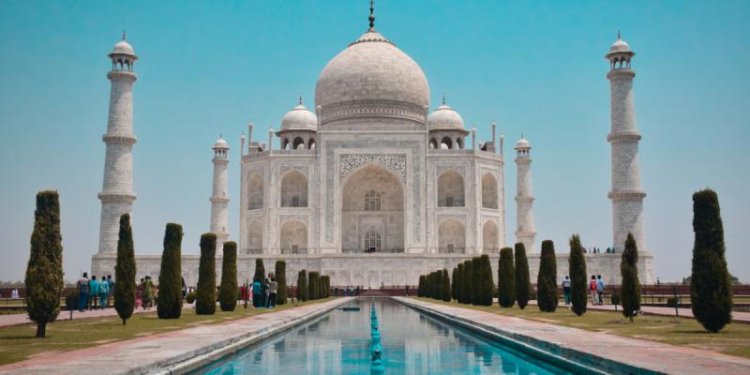The Delhi High Court on Friday directed the Archeological Survey of India (ASI) to decide representation seeking change in the books of history pertaining to the construction of the Taj Mahal, claiming there is no historical evidence of demolition of palace of Raja Man Singh and fresh construction of Taj Mahal on the same site.
The bench of Justice Satish Chander Sharma and Justice Tushar Rao Gedela directed ASI to decide on a representation made by Surjit Singh Yadav, President Hindu Sena (NGO) while disposing of a Public Interest Litigation (PIL) sought a change in books of history in regards to construction of Taj Mahal.
The plea further sought direction to the Archeological Survey of India to carry out an investigation about the age of the Taj Mahal including the existence of the palace of Raja Man Singh as of 31.12.1631 on the site of the Taj Mahal, in Agra and to file a report before this Court.
The plea claimed that the wrong historical facts are being taught and exhibited to the public and people at large related to the construction of the Taj Mahal.
Petitioner Surjit Singh Yadav also claimed that the cause of action arose when the Archeological Survey of India (ASI) absolved itself from taking a stand on these queries by stating that these queries are a matter of deep study and research. The cause of action continues to persists to date because wrong historical facts related to the construction of the Taj Mahal are still in the public domain.
The petitioner claimed that the Archaeological Survey of India (ASI) in its ASI, Agra Circle website has provided conflicting and contradictory information on the Taj Mahal. Under this, the ASI has mentioned that six months after the death of Mumtaz Mahal in 1631, her body was transferred to Agra to be enshrined in the crypt of the main Tomb of the Taj Mahal. This is contradictory to the information provided in the same web page for Taj Mahal where ASI has claimed that it took 17 years for the monuments complex to be completed in 1648.
Ustad Ahmad Lahori has been cited as the architect of the Taj Mahal. However the study undertaken by the Petitioner establishes that the evidence supporting the identification of Ustad Ahamd Lahori as the architect of the Taj Mahal is only circumstantial. The various court chroniclers of King Shahajhan have been silent about the name of the architect of the Taj Mahal. It is extremely strange that all the court chroniclers of King Shahajhan have not mentioned the name of the architect of this magnificent mausoleum.
Therefore, this quite clearly indicates that the mansion of Raja Man Singh was not demolished but only modified and renovated to create the current look of the Taj Mahal.



